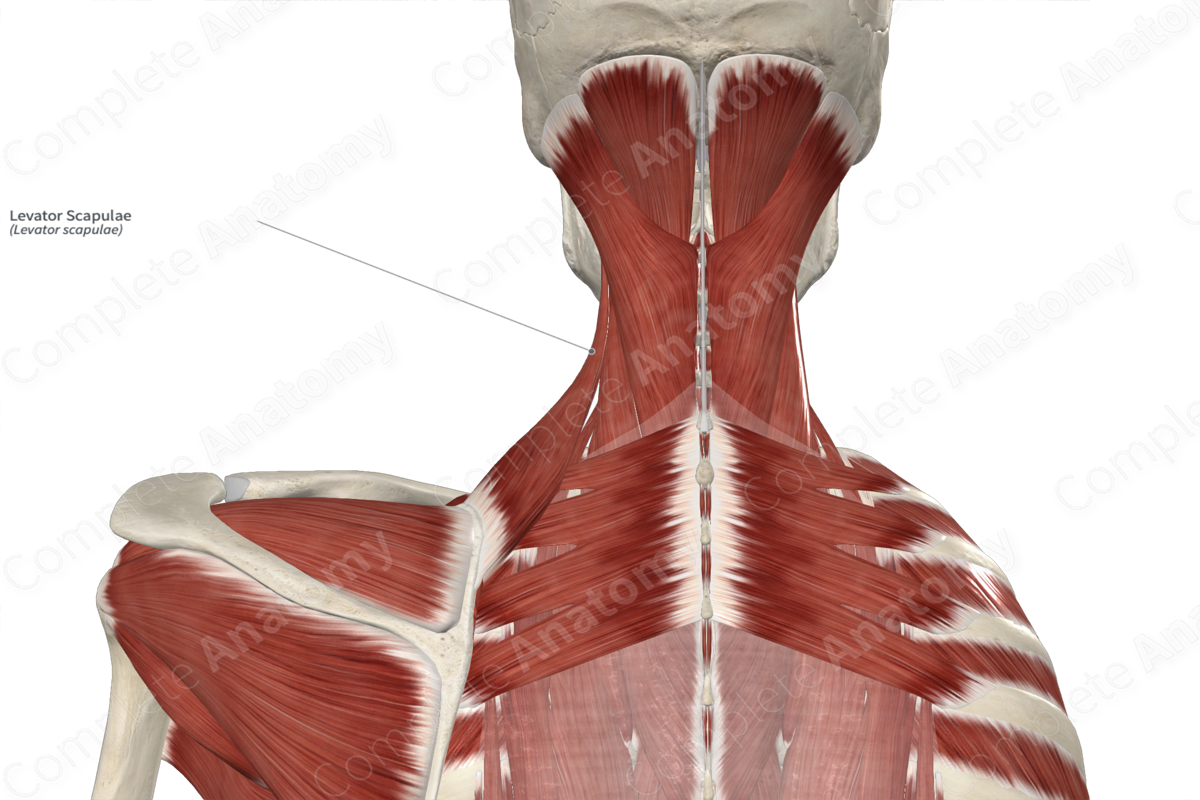
Quick Facts
Origin: Transverse processes of C1-C2 vertebrae, posterior tubercles of transverse processes of C3-C4 vertebrae.
Insertion: Superior angle of scapula, medial border of scapula superior to spine of scapula.
Action: Elevates and downwardly rotates pectoral (shoulder) girdle at acromioclavicular and sternoclavicular joints; extends and laterally flexes neck at cervical vertebral joints.
Innervation: Anterior rami of third and fourth cervical nerves, dorsal scapular nerve (C5).
Arterial Supply: Transverse cervical, ascending cervical, and vertebral arteries.
Origin
The levator scapulae originates from the:
- transverse processes of the atlas (first cervical vertebra) and axis (second cervical vertebra);
- posterior tubercles of transverse processes of the third and fourth cervical vertebrae.
Insertion
The fibers of the levator scapulae travel inferolaterally and insert, via a broad tendon, onto the:
- medial aspect of the superior angle of scapula;
- portion of the medial border of the scapula that lies superior to the spine of the scapula.
Key Features & Anatomical Relations
The levator scapulae is an extrinsic muscle of the back and is found in the lateral cervical region of the neck. It is a thin, strap-like type of skeletal muscle.
It is located:
- superficial to the serratus posterior superior muscle;
- deep to the sternocleidomastoid muscle (at its superior end) and the trapezius muscle (at its inferior end), and the accessory nerve;
- medial to the supraspinatus muscle (at its inferior end);
- lateral to the splenius colli, longissimus colli and rhomboid minor muscles.
The levator scapulae muscle contributes to the formation of the floor of the lateral cervical region.
Actions
The levator scapulae is involved in multiple actions:
- elevates the pectoral (shoulder) girdle at the acromioclavicular and sternoclavicular joints;
- downwardly rotates the pectoral girdle at the acromioclavicular and sternoclavicular joints.
- during unilateral contraction, it laterally flexes the neck to the same side at the cervical vertebral joints;
- during bilateral contraction, it extends the neck at the cervical vertebral joints (Moore, Dalley and Agur, 2009).
References
Moore, K. L., Dalley, A. F. and Agur, A. M. R. (2009) Clinically Oriented Anatomy. Lippincott Williams & Wilkins.
Learn more about this topic from other Elsevier products
Levator Scapulae: What Is It, Where Is It Located and More

The levator scapulae is a large, superficial muscle of the upper back and neck that extends along the neck and elevates the scapula, or the Learn with Osmosis





